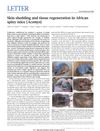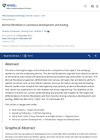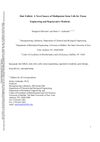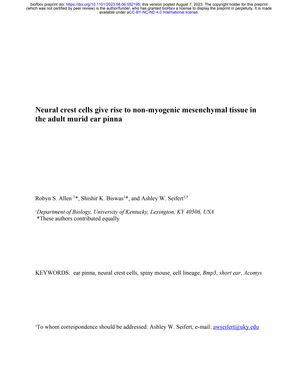TLDR Certain cells in the adult mouse ear come from cranial neural crest cells, but muscle and hair cells do not.
This study provides a detailed cellular analysis of the development of the ear pinna in mice, revealing that various cell types in the adult pinna, including connective tissue fibroblasts, elastic cartilage, dermal papilla cells, dermal sheath cells, vasculature, and adipocytes, are derived from cranial neural crest cells. However, skeletal muscle and hair follicles are not. The research also examines the short ear mouse mutant, finding that a lack of proper elastic cartilage development in the distal pinna is linked to impaired chondroprogenitor proliferation and correlates with the locations of vasculature-conveying foramen. While there is an increase in adipocytes in the adult pinna, this is not a developmental issue but rather a condition that arises in adulthood. The study concludes that chondrogenesis, the process of cartilage development, remains impaired in the adult mid-distal ear pinna of these mutants, providing a foundation for further research into the development of the ear pinna and elastic cartilage.
 418 citations
,
September 2012 in “Nature”
418 citations
,
September 2012 in “Nature” African spiny mice can regenerate skin, hair, and cartilage, but not muscle, and their unique abilities could be useful for regenerative medicine.
 14 citations
,
July 2019 in “Experimental and Molecular Medicine”
14 citations
,
July 2019 in “Experimental and Molecular Medicine” Nanog gene boosts stem cells, helps hair growth, and may treat hair loss.
 1 citations
,
May 2017 in “InTech eBooks”
1 citations
,
May 2017 in “InTech eBooks” Hair loss in Androgenetic alopecia (AGA) is due to altered cell sensitivity to hormones, not increased hormone levels. Hair growth periods shorten over time, causing hair to become thinner and shorter. This is linked to miscommunication between cell pathways in hair follicles. There's also a change in gene expression related to blood vessels and cell growth in balding hair follicles. The exact molecular causes of AGA are still unclear.
 14 citations
,
November 2020 in “International Journal of Molecular Sciences”
14 citations
,
November 2020 in “International Journal of Molecular Sciences” Advanced therapies like gene, cell, and tissue engineering show promise for hair regrowth in alopecia, but their safety and effectiveness need more verification.
 73 citations
,
August 2011 in “Stem Cell Research”
73 citations
,
August 2011 in “Stem Cell Research” Human hair follicle stem cells can turn into multiple cell types but lose some of this ability after being grown in the lab for a long time.
 115 citations
,
December 2017 in “Wiley Interdisciplinary Reviews-Developmental Biology”
115 citations
,
December 2017 in “Wiley Interdisciplinary Reviews-Developmental Biology” Skin cells called dermal fibroblasts are important for skin growth, hair growth, and wound healing.
 65 citations
,
November 2012 in “Tissue Engineering Part B-reviews”
65 citations
,
November 2012 in “Tissue Engineering Part B-reviews” Hair follicle stem cells are a promising source for tissue repair and treating skin or hair diseases.









